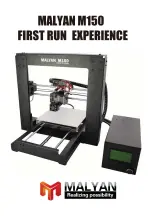
10 LPRINT CHRS(27);"xl";
20 LPRINT CHR$(27);":" ;CHR$(O);CHR$(O);CHR$(O);
30 LPRINT CHR$(27);"%";CHR$(l);CHR$(O);
40 LPRINT CHR$(27);"&";CHR$(O);"<<";
50 LPRINT CHR$(O);CHR$(12);CHRS(O);
60 FOR X=1 TO 36
70 READ C: LPRINT CHR$(C);
80 NEXT X
90 LPRINT "YOUR CHARACTER
IN
PICA: < < <"
100 LPRINT "IN DOUBLE-WIDTH EMPHASIZED PICA: ";
110 LPRINT CHR$(27);"!*< < <"
120 LPRINT CHR$(27);"!";CHR$(O);
130 DATA 4,0,0,8,0,0,16,0,0,32,0,0
140 DATA 64,0,0,255,255,192,64,0,0,32,0,0
150 DATA 16,0,0,8,0,0,4,0,0,0,0,0
YOUR CHARACTER IN PICA:
IN DOUBLE-WIDTH EMPHASIZED PICA:
When you run this program for your own character, you find out
whether or not it looks right to you. If it doesn’t, move the dots as
needed, recalculate and change the data numbers, and run the prog-
ram again.
Second NLQ definition program
When you are satisfied with the character you have created, enter
and run the next program. Use your data numbers instead of the ones
in lines
130-150.
If you want to define more than one character,
change line
10
so that J equals the total number of characters you are
defining (the maximum is six) and enter the extra
data
numbers (36
for each character).
1 0
20
30
40
50
60
70
80
90
J=1: IF J>3 THEN A=58 ELSE A=60
LPRINT CHR$(27)"x"CHR$(l)
FOR X=58 TO 63: LPRINT CHR$(X)" ";: NEXT X
LPRINT
LPRINT CHR$(27)": "CHR$(O)CHR$(O)CHR$(0);
LPRINT CHR$(27)"%"CHR$(l)CHR$(0);
LPRINT CHR$(27)"&"CHR$(0)CHR$(A)CHR$(A-1+J);
FOR Y=1 TO J
LPRINT CHR$(0)CHR$(12)CHR$(0);
100 FOR X=1 TO 36
110 READ C: LPRINT CHR$(C);
120 NEXT X: NEXT Y
130 FOR X=58 TO 63: LPRINT CHR$(X)" ";: NEXT X
140 DATA 4,0,0,8,0,0,16,0,0,32,0,0
150 DATA 64,0,0,255,255,192,64,0,0,32,0,0
160 DATA 16,0,0,8,0,0,4,0,0,0,0,0
69
Summary of Contents for LX-86
Page 1: ...EPSON LX 86 TM PRINTER User s Manual ...
Page 30: ......
















































